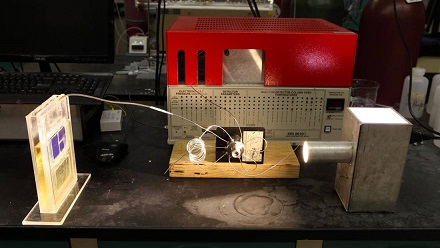 Researchers at the University of Illinois in Chicago have recently developed a solar cell able to convert atmospheric carbon dioxide into hydrocarbon fuel, using sunlight as its only power. This method has proven to be extremely beneficial to the environment, providing a sustainable fuel source while cleaning the carbon pollution at the same time.
Researchers at the University of Illinois in Chicago have recently developed a solar cell able to convert atmospheric carbon dioxide into hydrocarbon fuel, using sunlight as its only power. This method has proven to be extremely beneficial to the environment, providing a sustainable fuel source while cleaning the carbon pollution at the same time.
Each year carbon emissions are exponentially rising, resulting in major side effects on the environment. From motorcycles to transport trucks, over 1.2 billion motor vehicles are currently on the road worldwide and that number is increasing annually. Initiatives, such as electric vehicles and renewable energy factories are cutting down on pollution, but not at the level needed to sustain air quality.
This is where the Photocell comes in. Operating similarily to a plant’s photosynthesis process, the cell converts CO2 and light into oxygen and sugars. The solar cell pulls in carbon emissions and produces Syngas, a portmanteau for synthetic gas, a mixture of hydrogen and carbon monoxide, which can be used directly for fuel or converted to other hydrocarbon fuels. This process works 1,000 times faster and 20 times cheaper than a normal conversion process, due to a nanoflake tungsten diselenide, an engineered catalyst which is more active than regular noble-metal catalysts.
Contribution to sustainable environmental initiatives can have a large effect on the environment over time, improving the air we breathe and wildlife around us. Eclipse strives to continually improve our environmental responsibility through many company initiates, whether for client projects or for Eclipse’s own benefit.
Source: IFLScience



